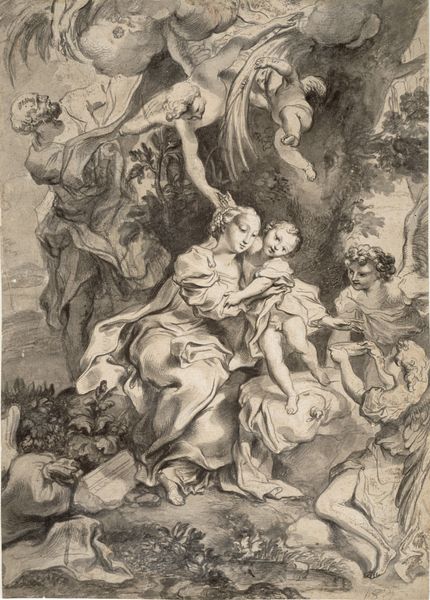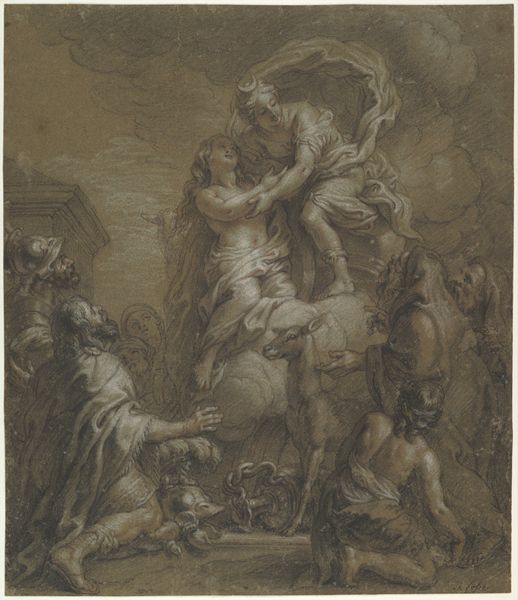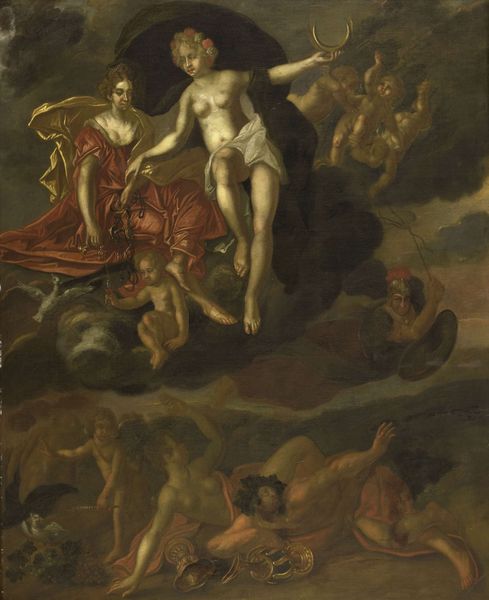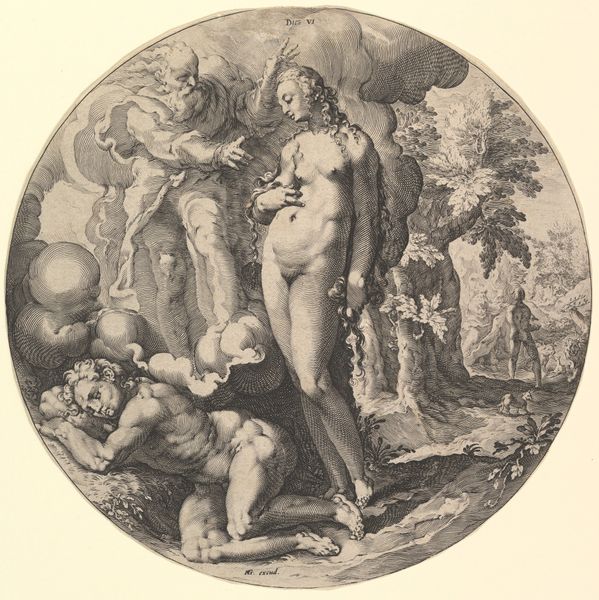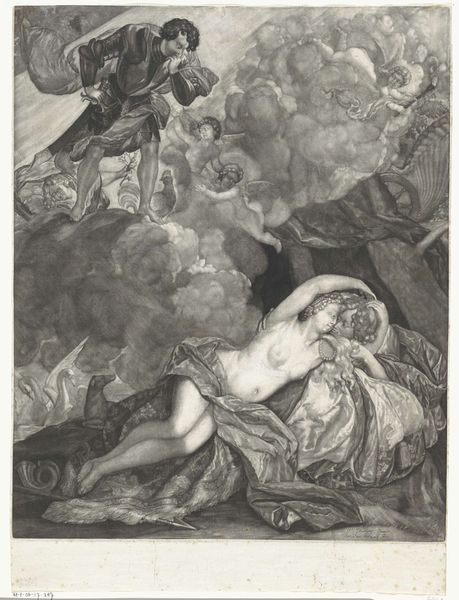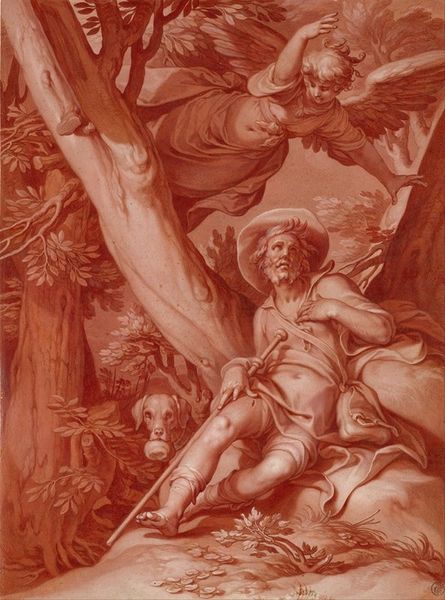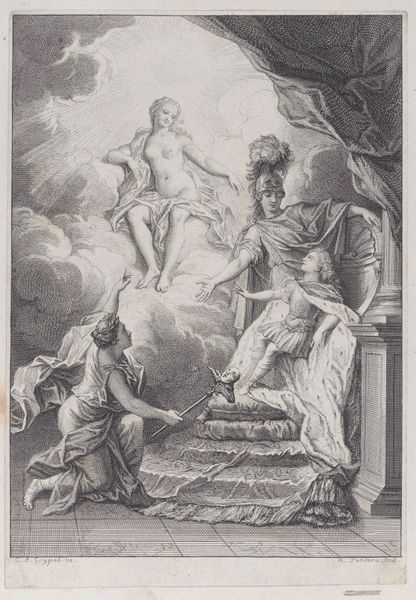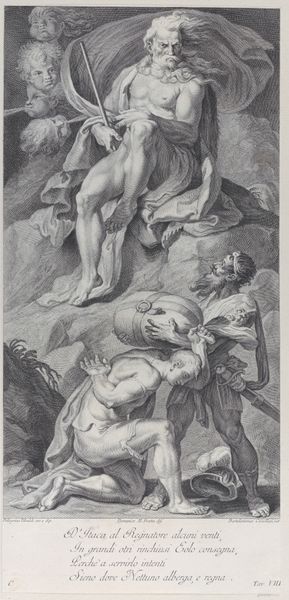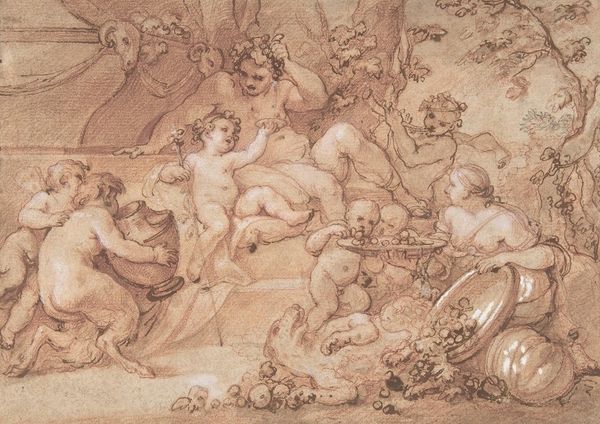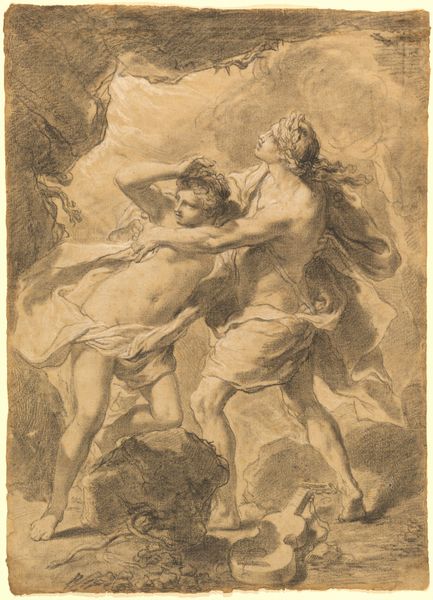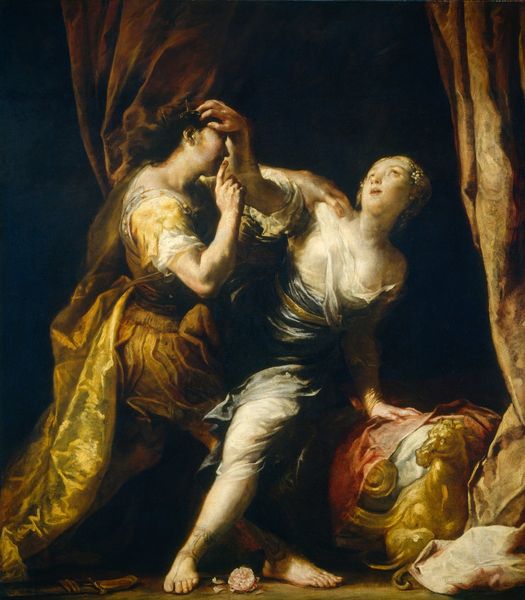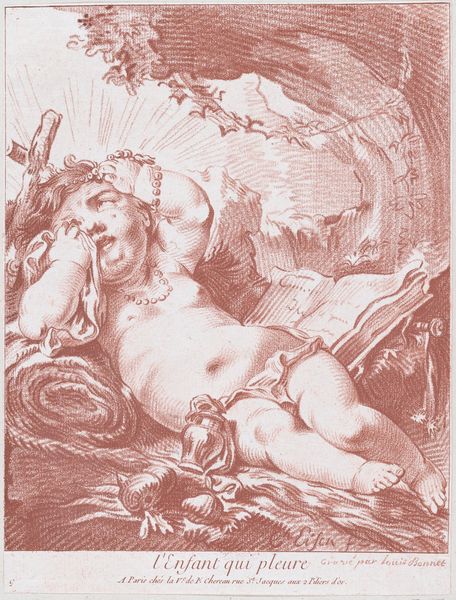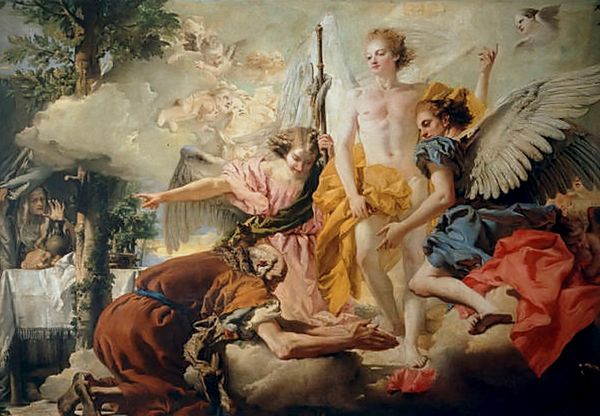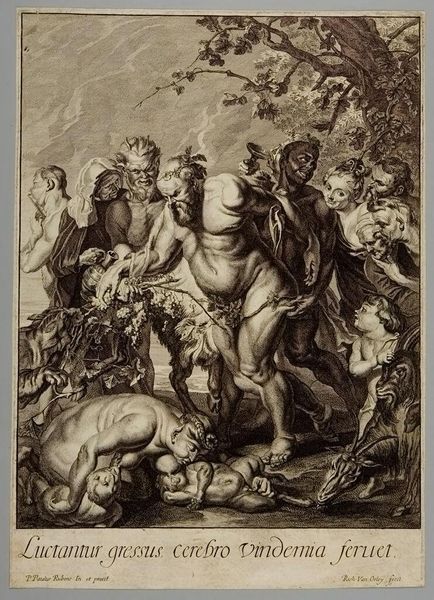
painting, oil-paint
#
narrative-art
#
baroque
#
painting
#
oil-paint
#
figuration
#
oil painting
#
history-painting
Dimensions: support height 40.3 cm, support width 31.5 cm, frame height 60 cm, frame width 50.5 cm, sight size height 40 cm, sight size width 31 cm
Copyright: Rijks Museum: Open Domain
Editor: This painting is Pieter Lastman’s *The Sacrifice of Abraham*, from around 1612, rendered in oil. The figures are dynamic, yet the brown palette creates a certain somber stillness. What compositional elements stand out to you? Curator: Immediately, I note the strong diagonal formed by Abraham's arm wielding the blade and the angel's opposing intervention. Lastman creates tension through a visual push and pull. Consider how the dramatic lighting accentuates this dynamic interplay. Do you notice how the limited colour palette is carefully gradated? Editor: Yes, the shading gives the figures weight and volume, and I noticed the composition guides my eye. What about the textures; they don't appear as polished or varied compared to some other Baroque paintings? Curator: Precisely. Lastman emphasizes form over elaborate ornamentation. The angel’s drapery isn’t swirling with complex folds; instead, its shape directs the eye. Observe the texture of Abraham's robe, the impasto isn’t aiming to replicate fabric realistically. It is functioning to suggest visual interest rather than imitate the subject. Do you agree? Editor: That's an interesting point, the painting appears to communicate by prioritizing its own artistic devices, foregoing what it represents in favor of the pictorial apparatus used to convey a meaning. It is self-referential, then? Curator: I think you’re intuiting how form takes precedence. Did Lastman intend his viewers to decipher complex allegory, or appreciate how formal structures bear significance in art? How does your view of the artwork change considering what we've discussed? Editor: By seeing the relationship between structure, shading, and scale, it is the arrangement of those features that informs the painting. I see how the formal elements carry the work’s meaning and depth, rather than solely the biblical scene it depicts. Thank you!
Comments
No comments
Be the first to comment and join the conversation on the ultimate creative platform.
